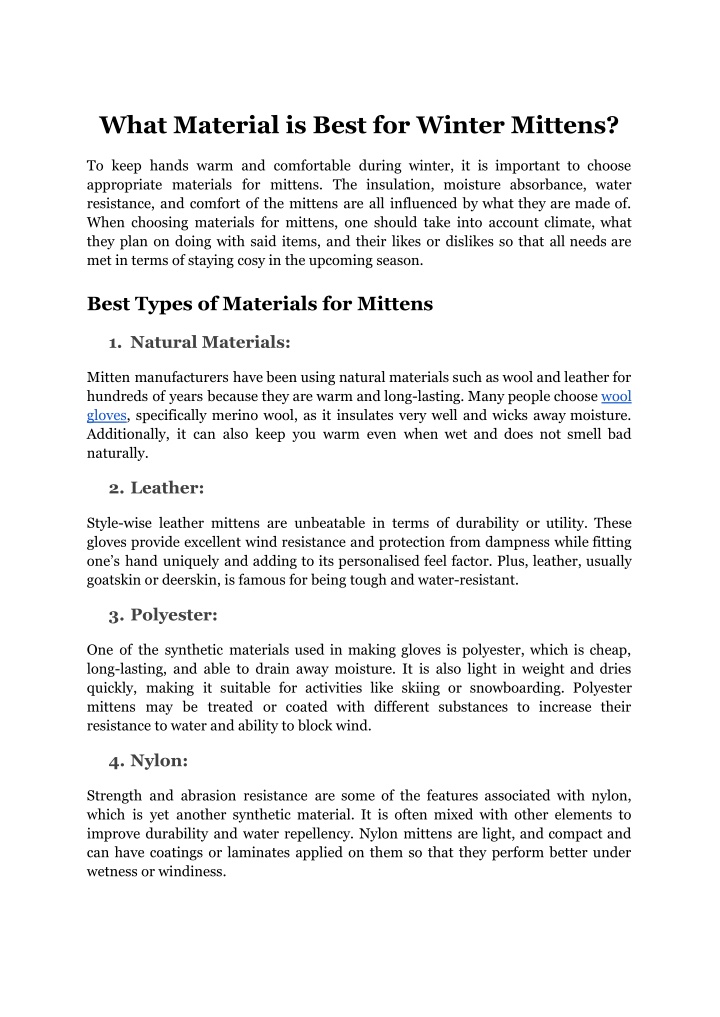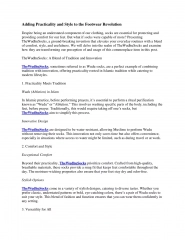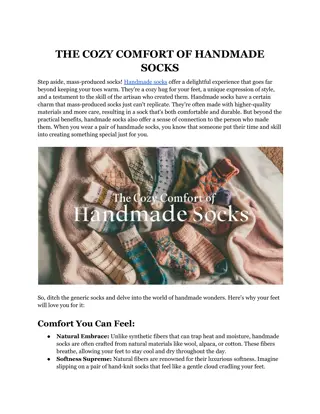
What Material is Best for Winter Mittens? - Tibetan Socks
Explore the best materials for winter mittens to keep your hands warm and cozy in chilly weather. Choose wisely for ultimate comfort!
Download Presentation

Please find below an Image/Link to download the presentation.
The content on the website is provided AS IS for your information and personal use only. It may not be sold, licensed, or shared on other websites without obtaining consent from the author. If you encounter any issues during the download, it is possible that the publisher has removed the file from their server.
You are allowed to download the files provided on this website for personal or commercial use, subject to the condition that they are used lawfully. All files are the property of their respective owners.
The content on the website is provided AS IS for your information and personal use only. It may not be sold, licensed, or shared on other websites without obtaining consent from the author.
E N D
Presentation Transcript
What Material is Best for Winter Mittens? To keep hands warm and comfortable during winter, it is important to choose appropriate materials for mittens. The insulation, moisture absorbance, water resistance, and comfort of the mittens are all influenced by what they are made of. When choosing materials for mittens, one should take into account climate, what they plan on doing with said items, and their likes or dislikes so that all needs are met in terms of staying cosy in the upcoming season. Best Types of Materials for Mittens 1. Natural Materials: Mitten manufacturers have been using natural materials such as wool and leather for hundreds of years because they are warm and long-lasting. Many people choose wool gloves, specifically merino wool, as it insulates very well and wicks away moisture. Additionally, it can also keep you warm even when wet and does not smell bad naturally. 2. Leather: Style-wise leather mittens are unbeatable in terms of durability or utility. These gloves provide excellent wind resistance and protection from dampness while fitting one s hand uniquely and adding to its personalised feel factor. Plus, leather, usually goatskin or deerskin, is famous for being tough and water-resistant. 3. Polyester: One of the synthetic materials used in making gloves is polyester, which is cheap, long-lasting, and able to drain away moisture. It is also light in weight and dries quickly, making it suitable for activities like skiing or snowboarding. Polyester mittens may be treated or coated with different substances to increase their resistance to water and ability to block wind. 4. Nylon: Strength and abrasion resistance are some of the features associated with nylon, which is yet another synthetic material. It is often mixed with other elements to improve durability and water repellency. Nylon mittens are light, and compact and can have coatings or laminates applied on them so that they perform better under wetness or windiness.
5. Blend Materials: Blend fabrics bring together both artificial fibres characteristics with those found naturally, thereby producing gloves that keep warmth while being comfy enough to wear during intense activities like sports events held in cold weather conditions. Common blended types of wool gloves include wool-polyester, wool-nylon, and polyester-spandex. These blend materials result in convertible wool gloves preferred by many people. Read More Articles: 6 Tips for Preventing Oil Varnishing Factors to Consider When Choosing Material 1. Flexibility: Go for materials that have a great range of motion and do not limit the movement of your hands. This is especially necessary for tasks that need nimbleness. 2. Weight: Keep into account the weight of the fabrics because heavy mittens can be inconvenient and wearying when used over extended periods. Conversely, light-weighted ones allow comfort and freedom in motion. 3. Insulation Type: Different insulating materials such as down, synthetic, or fleece offer different levels of warmth. Choose what suits you best depending on weather conditions and activity level. 4. Environmental Impact: Some substances leave more carbon footprint than others do hence it may matter to those who care about conserving nature. Seek out eco-friendly or recycled products if this describes you. 5. Grip: When participating in outdoor activities like skiing or hiking, having good traction becomes mandatory. Opt for materials with non-slip surfaces that ensure objects are securely held onto. 6. Ease of Cleaning: Think about how easy it will be to clean and maintain these gloves. Some gloves can be machine-washed while others may require special attention.
7. Style and Appearance: While functionality can never be overlooked, it is also vital to pay attention to looks. Select fashionable designs made from your favourite colours so that wearing them boosts self-confidence too. 8. Allergies: For individuals with sensitive skin or allergies hypoallergenic items should be used in making these items lest they cause irritations on one s body surface area. Thus, triggering allergic reactions instead. 9. Odour Resistance: Some textiles possess natural properties against smells whereas others are treated to prevent stench. Hence, useful especially if planning on using them during sweaty activities, which might make them smelly. 10. Seasonal Versatility: If looking for multi-purpose mitts suitable for various seasons then go for materials that can provide warmth during winter but are also breathable enough to allow air circulation in hotter weather conditions. 11.Material Origin: Where the materials used come from may also matter depending on one s personal choice. Whether sourced locally or produced ethically elsewhere adds value to your purchase decision-making. Conclusion During winter, the choice of material for mitten making is very crucial as this determines one s comfort and warmth throughout the season. Among other things, wool gloves are singled out for their ability to insulate heat and wick away sweat from the body. For both durability and warmth, combination fabrics result in wool convertible mittens, which can be used as they bring together all the qualities in equal measure. To get the best wool gloves and a variety of other mittens and socks, visit our website or contact our team at Tibetan Socks! Read More Article: What to Consider When Choosing Ready-Mix Concrete Suppliers? FAQs Can wool gloves work for freezing temperatures?
Wool gloves are ideal for extremely cold weather because they have great insulation ability. Do polyester mittens keep your hands dry? Polyester mittens are weatherproof to some extent. They can resist slight rainfalls or snowflakes. Is it okay if I put wool blend mittens in the washing machine? You should read the label. However, most of the mittens may need manual cleaning to preserve their quality. Site Article: WHAT MATERIAL IS BEST FOR WINTER MITTENS?






















